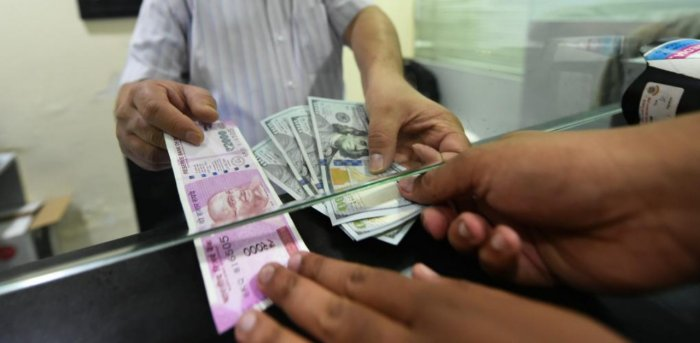
India getting bigger but not richer
- अक्टूबर 12, 2022
- 0
Two interesting things have happened almost simultaneously in the past year. Bangladesh’s per capita income overtook that of India and, more recently, India has overtaken the United Kingdom to become the fifth largest economy in the world.
This juxtaposition underscores two things. First, the link between size and prosperity is tenuous, even if we ignore economic inequality. Bangladesh as a country is much poorer than India, but its citizens are richer. Because of economic size, India is a member of the G20. But its citizens are the poorest in the G20. The citizens of Indonesia, The next poorest, have a per capita income that is 150 per cent greater than India’s, but its economy is only a third of India’s in size.
Of course, size matters. A country can punch well above its weight in projection of economic power, the larger it’s aggregate gross domestic product (GDP). India is able to afford an extremely large military because its aggregate GDP allows it to.
India’s collective ability to invest at scale is also significantly enhanced by its large GDP. India’s economic autonomy, its ability to rely on domestic resource mobilization and to craft independent trade and economic policies are empowered by increasing economic size.
But when it comes to increasing prosperity, this is not the case, and this has ramifications. India’s personal income tax kicks in at 250,000 per annum and that at a token rate of 5 per cent the standard rate of 20 per cent kicks in at 500,000, In contrast, in the UK, the 20 per cent rate kicks in at one third the per capita income.
So despite being the fifth largest economy in the world, India’s ability to fund health, education, and public service is severely constrained by low individual prosperity.
A large aggregate GDP and a low per capita GDP poses other difficult policy conundrums. India’s share in the global market is just 3.5 per cent despite its being the fifth largest economy. But India is also fifth largest consumer market with household final consumption expenditure of $2 trillion. This is roughly the same size as the German market.
But per capita consumption expenditure of an Indian is just $1,500 compared with $24,000 of the average German. So the average Indian consumer has only 1/14th of the purchasing power of the average German.
This also explains why the bulk of India’s consumption is sourced from the informal sector. Despite the large size of GDP, the low levels of per capita income cannot sustain consumption of goods and services at global standards. This structural pattern of demand self-limits the prosperity that expanding economic size delivers to India.
But every patriot should learn from our history and recognize that celebration size will neither negate nor obscure the huge economic challenges that India faces.
भारत की अर्थव्यवस्था बड़ी हो रही
मगर जनता अमीर नहीं हो रही
इस साल दो रोचक चीजें साथ-साथ हुई हैं। बांग्लादेश की प्रति व्यक्ति आय भारत से अधिक हो गई और भारत ब्रिटेन को पछाड़कर विश्व में पांचवीं सबसे बड़ी अर्थव्यवस्था बन गया है।
इन दोनों तथ्यों की तुलना करने पर रोचक तथ्य उजागर होते हैं। पहला, यदि हम अर्थिक असमानता को दरकिनार कर दें तो आकार और संपन्नता की कड़ी कमजोर है। देश के रूप में भारत के मुकाबले बांग्लादेश ज्यादा गरीब है लेकिन भारतीयों की तुलना में बांग्लादेश के नागरिक ज्यादा अमीर हैं।
अर्थव्यवस्था के आकार के कारण भारत जी20 का सदस्य है लेकिन जी20 में भारत के नागरिक सबसे ज्यादा गरीब हैं। भारत के बाद दूसरा सबसे गरीब देश इंडोनेशिया है लेकिन भारतीयों की तुलना में इंडोनेशिया के नागरिकों की प्रति व्यक्ति आय 150 फीसदी ज्यादा है और भारत की अर्थव्यवस्था के मुकाबले इंडोनेशिया की अर्थव्यस्था एक तिहाई है।
अर्थव्यवस्था का आकार मायने रखते है और देश एक आर्थिक ताकत के रूप में अपनी क्षमताओं से अधिक लक्ष्यों को प्राप्त कर सकता हैं। बड़ी अर्थव्यवस्था होने पर देश का सकल घरेलू उत्पाद अधिक होता है। भारत अपने सकल धरेलू उत्पाद के कारण बहुत बड़ी सेना का खर्च वहन कर सकता है। ज्यादा सकल घरेलू उत्पाद होने के कारण भारत सामूहिक रूप से कहीं अधिक मात्रा में निवेश कर सकता है।
अर्थव्यवस्था का आकार बढ़ने के कारण भारत को आर्थिक स्वायत्तता है। भारत घरेलू संसाधनों का इस्तेमाल कर सकता है और स्वतंत्र रूप से व्यापार एवं आर्थिक नीतियां बना सकता है।
लेकिन जब ज्यादा संपन्नता की बात आती है तो ऐसा नहीं होता है और इसका प्रभाव पड़ता है। भारत का व्यक्तिगत आयकर प्रति वर्ष सालाना 2,50,000 की आय से शुरू होता है और इस पर नाममात्र का पांच प्रतिशत कर लगता हैं इसके बाद 5,00,000 रूपये सालाना आमदनी पर 20 प्रतिशत की मानक दर से कर लगता है। इसके विपरित ब्रिटेन में प्रति व्यक्ति आय के एक तिहाई पर 20 फीसदी कर लगना शुरू होता है।
ज्यादा सकल घरेलू उत्पाद और प्रति व्यक्ति कम आय से मुश्किल स्थितियां उजागर होती है।
भारत विश्व में पांचवीं बड़ी अर्थव्यवस्था है लेकिन इसकी वैश्विक बाजार में भागीदारी केवल 3.5 फीसदी है। हालांकि भारत विश्व का पांचवां सबसे बड़ा उपभोक्ता बाजार है जहां घरेलू अंतिम खपत 2 लाख करोड़ डॉलर है। भारत का यह बाजार जर्मनी के बाजार के बराबर है।
हालांकि भारत की प्रति व्यक्ति खपत व्यय केवल 1,500 डॉलर है जबकि जर्मती में प्रति व्यक्ति खपत व्यय 24,000 डॉलर है। लिहाजा जर्मनी की तुलना में भारत की उपभोक्ता की खरीदारी क्षमता 1/14 है।
यहां पर यह बात भी स्पष्ट होती है कि भारत के उपभोक्ताओं को ज्यादातर सामान की आपूर्ति अनौपचारिक क्षेत्र से होती है। सकल उत्पाद के बड़े आकार और प्रति व्यक्ति कम आय की बदौलत वैश्विक स्तर पर सामान और सेवाएं चिरस्थायी ढंग से सामान और सेवाएं चिरस्थायी ढंग से कायम नहीं हो सकती हैं। इस तरह मांग का संरचनात्मक स्वरूप उस संपन्न को अपनेआप सीमित कर देता है जो विस्तृत हो रहा भारत का आर्थिक आकार उसे प्रदान करता है।
लेकिन हर राष्ट्रीयवादी को इतिहास से सीख लेनी होगी। हर राष्ट्रवादी को यह स्वीकारना होगा कि अर्थव्यवस्था के बड़े होने से भारत के समक्ष आर्थिक चुनौतियों को न तो नकारा जा सकता है और न ही उन्हें हल्का आंका जा सकता है।
































































